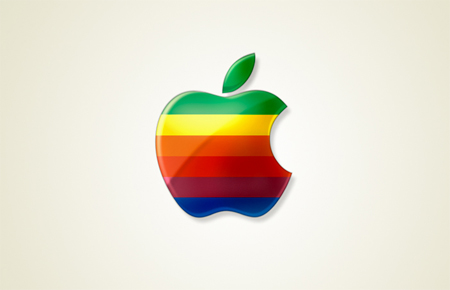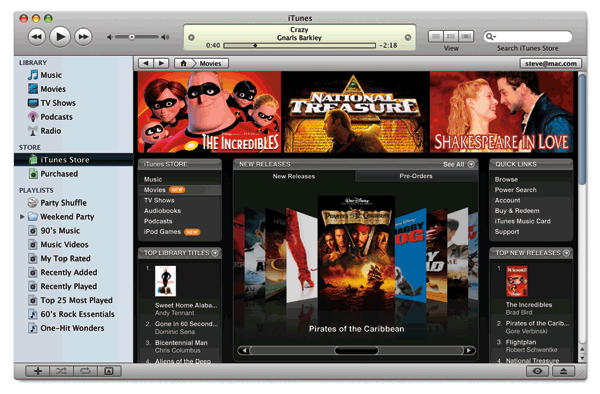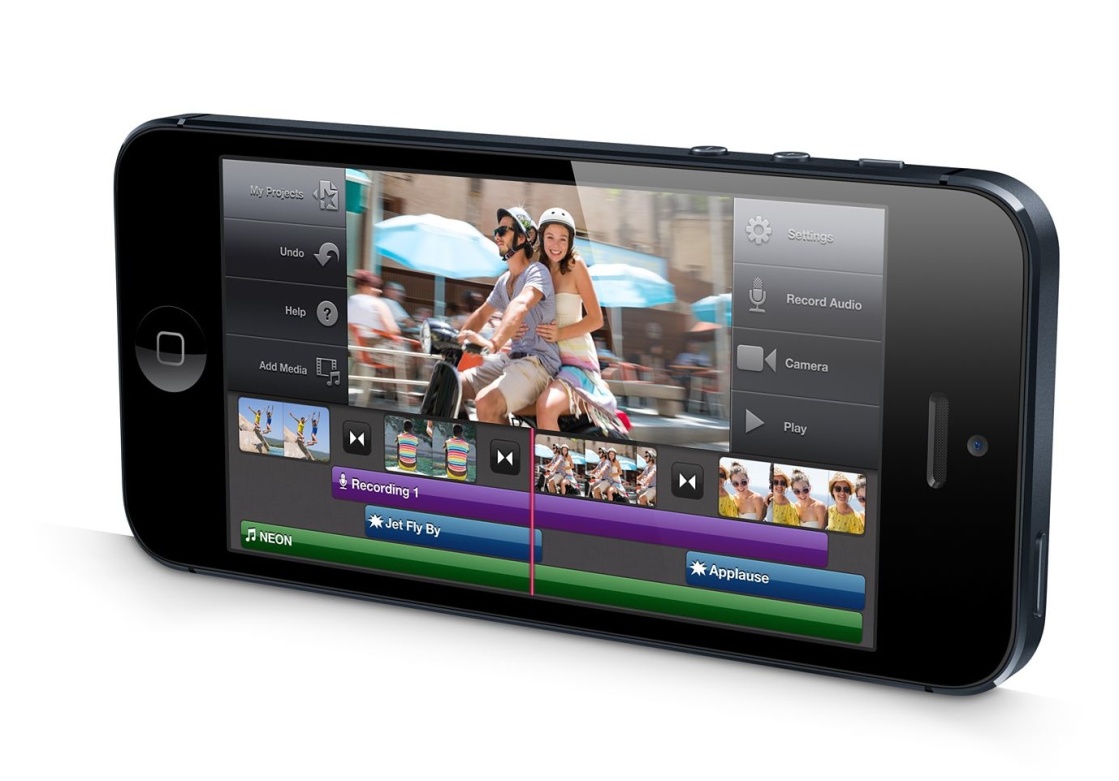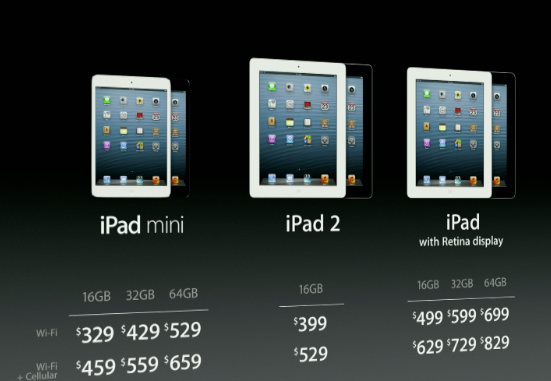Apple's Everlasting Influence on the World
09
2015
The iPod, iPhone and the iPad. Three revolutionary products which have shaped a generation. Three products which have transformed the way in which we communicate, listen to music and work. Apple have set a benchmark for its competitors whom have yet to challenge the type of impact it has had on the consumer electronics and personal computer market. So effective has been their approach and business model that in 2012, Apple’s market value of $546 billion made it the world’s most valuable publicly traded company. The cultural impact of Apple is unprecedented, much to the mastermind of Apple’s co-founder, the late Steve Jobs.

But it hasn’t always been rosy at Apple. The mid-1980’s saw a significant decline in the company’s reputation with failed attempts to produce successful consumer targeted products. Moreover Apple was developing computers and software which were engineered with great ingenuity yet available at a cost which dwarfed that of Microsoft’s affordable Windows. Apple’s focus on high profit margins and failed products consequently saw dwindling market shares and stock prices. Re-enter Steve Jobs. After several CEO changes at the company and with Apple in trouble; co-founder Steve Jobs returned to save and change the fortunes of the struggling company. His return would mark a turning point for Apple as he began restructuring the company’s brand, culture and product line; ultimately transforming it into a successful consumer electronics company, a feat which they once tried and failed. The impact of Apple and its success is credit to Steve Jobs’ vision, leadership skills and the unique corporate culture he implemented to make Apple one of the biggest and well-known companies in the world today. So much so, that over half of all US households are reported to own an Apple product. And it all started with the iPod.
"With iPod, listening to music will never be the same again" – Steve Jobs, 2001.

In 2001, Apple released the iPod which revolutionised the music industry as we know it and how we listen to music. We had now entered an era of digital music. The iPod took the existing portable media player and essentially enhanced its capabilities the only way Apple could; enabling us to store and listen to thousands of songs continuously in a device that resembled the size of a packet of playing cards. Its unique design was innovative, as was Apple’s human interface engineering. Since its launch, the iPod has spawned 5 different models and 24 variations. Along with the iPod came iTunes; a media player which systematically changed the way music is played and purchased. Its impact is unparalleled in terms of how the music industry profits off music sales and how new artists have been able to breakthrough. A digitalised music industry, thanks to the success of the iPod, has been a major factor in the falling sales of CD’s and high street music retailers. Its impact however reaches far beyond the music industry. Podcasts have impacted the way we can access educational material for example. Music and media is easily accessible from anywhere in the world via iTunes. But most of all, owning an iPod has become fashionable and is recognisable all over the world. Thanks to the success of the iPod, Apple became a brand which could no longer be ignored. Once the iPod and iTunes were compatible to Windows, an audience which was once far afield, now wanted a bite of the apple. Apple’s mainstream appeal finally changed the company’s consumer perceptions and the iPod was central to this transformation. Apple were now on a trail of further success and focused their attention to the mobile phone industry.
"iPhone is a revolutionary and magical product that is literally five years ahead of any other mobile phone" – Steve Jobs, 2007.
The impact Apple made on the music and consumer electronics industry with the iPod was replicated with the release of the iPhone in 2007. They changed the whole smartphone landscape with the iPhone, which not only had a cultural impact but it forced the mobile phone industry to react. To this day, it remains ahead of its competitors in terms of ingenuity, design and appeal. Communicating has never been so dynamic and Apple reinvented the extent of which the capabilities of a mobile/smartphone could reach. Human interaction between users and their smartphones has never been so effortless as Apple’s iOS software has proved; incorporating touch and voice to minimalise the ease of use in how we access apps and communicate with our smartphones. The iPhone has comprehensively smashed pre-order sales of any smartphone on the market and continues to break sales records upon new releases; such is the demand for Apple products. Since 2007, it is estimated that a quarter of a billion iPhones have been shipped cumulatively worldwide from which Apple have generated a healthy $150 billion in revenue. Not a bad return on a product which has encountered its fair share of problems along the way. But this just emphasises the impact Apple has had on the consumer industry. This has also had a knock on effect for the iPhone 5 case market, turning over $2-3 Billion per year just in accessories and covers alone.

Although Apple stress the importance of product quality; problems such as reception issues encountered on the iPhone 4, or the problems with their Map app on the iPhone 5 and complaints about the battery life have done little to damage the overall furore of the products. Apple’s brand is at risk with problems which effect product quality but there is also the argument that consumers are actually buying into the brand rather than product itself, due in part to the enormous influence Apple continues to have on the consumer electronics and smartphone market.
"It’s so much more intimate than a laptop and so much more capable than a smartphone" – Steve Jobs, 2010.

But is the iPad just a luxury? In 2010, Apple released the iPad to a mixed reception. Many questioned its necessity and which proposed gap it filled in the tech market. But the iPad’s release just showed the strength of Apple’s brand and its existing effect on consumers. Last quarter results estimate that Apple sold 22.9 million iPad’s, an increase from 15.4 million of the previous year. In becoming the leading tablet-maker, Apple has pushed its competitors to ‘up their game’ and produce tablets of similar quality; just as they did with the iPhone. But regardless of its need, Apple has bridged the gap between the less tech savvy individuals and their products, thanks to the iPad and iPod. Apple has managed to influence all age groups and the overall impact is that they are pushing people who would otherwise shirk away from technology to using their products as the stepping stone.
Apple will always have that familiarity amongst users which cannot be said of other tablet or electronics companies. Steve Jobs not only turned Apple into a household name with cross-platform products such as the iPhone and iPad but the corporate culture he instilled at Apple has unequivocally helped in how employees at Apple advocate their products and relay their passion to consumers. The same loyalty has then been imprinted onto Apple’s customers. The impact of Apple will continue to extend across the globe as long as there is a demand for their products and with each tentative release; Apple never fails to incite excitement and a longing for more.
Author Bio:
This article was written by Rajnish Ghaly for the company Ace Case who supply iPhone 5 cases and accessories globally. Their ecommerce store caters for all Apple devices.

